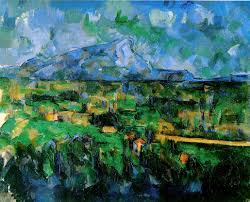In Eye and Mind, an evocative essay originally published in 1964, the French philosopher Maurice Merleau-Ponty explores painting as a form of vision. The painter’s vision, he says, is not an optical relation to a flat surface of points, lines and planes. It is rather an immersion in the depth and volubility of what there is. The painter paints with her body. She experiences space through corporeal phenomena such as orientation, polarity and envelopment.
Merleau-Ponty suggests that as such, painting represents the body’s open and immersive relation to space, which is the true characteristic of being in the world. Contrary to the Cartesian separation of consciousness and world, he says, “I do not see space according to its exterior envelope; I live it from the inside; I am immersed in it.” He invite us to imagine space not as a Cartesian system of coordinates in which each point is fixed and specified uniquely on a plane, to be looked at from afar, but, with Lucretius, as a fine rain of atoms, a coloured influx that moves continuously and submerges the gaze. Descartes’ separation of mind and body is replaced with a notion of the flesh as an intertwinement of world with self. Instead of vision as projection and perspective, we have vision as encroachment, interlacing, habitation.
Merleau-Ponty claims that unlike painting, music is incapable of drawing upon this fabric of brute meaning. It is too inconcrete, he maintains, “to depict anything but certain schemata of Being— its ebb and flow, its growth, its upheavals, its turbulence.”
Nevertheless, it seems to me that in shoegaze music we find the same inner animation, the same radiation of the visible, which according to Merleau-Ponty is what the painter seeks under the names of depth, space and colour. Like painting, shoegaze music displays this inner animation by creating movement without displacement. It is a movement created through vibration or radiation, offering instantaneous glimpses along with blurred, unstably suspended attitudes, clouding and encroaching on its lines and surfaces with an emotional tonality, a spatial mood, an atmosphere. Like the picture, a shoegaze song makes movement visible through its internal discordance.
“Seeing,” says Merleau-Ponty, “is not a certain mode of thought or presence to self; it is the means given me for being absent from myself, for being present from within at the fission of Being only at the end of which do I close up into myself.” What a beautiful way to describe the experience of listening to the dense, open and rent pieces of music in which we love to lose and recognise ourselves.
